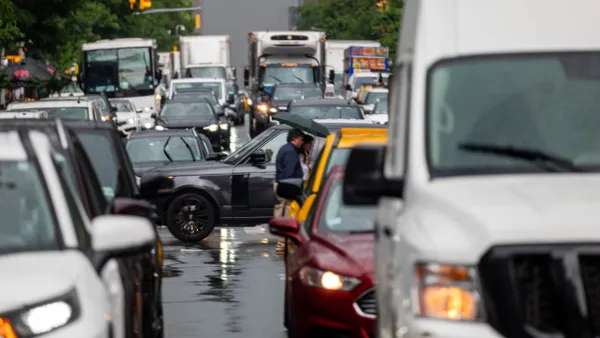UPDATE: April 14, 2021: The U.S. Department of Justice has intervened in a disability discrimination lawsuit that the Disability Rights Advocates brought against the City of Chicago in 2019 due to a lack of accessible pedestrian signals (APS) at intersections for people who are blind, have low vision or are deaf-blind.
APS devices provide pedestrians with crossing information in a safe, non-visual format through speech messages, “vibrotactile surfaces” and audible cues. Chicago, which has acknowledged the need for APS installations since 2006, has installed APS at only 15 of its 2,700 intersections with visual crossing signals, DOJ noted.
“Chicago has determined that safe-crossing information is necessary for sighted pedestrians to navigate throughout the city, and this suit seeks to ensure that the city provides the same benefit to people with visual disabilities,” said Principal Deputy Assistant Attorney General Pamela S. Karlan of the Justice Department’s Civil Rights Division in an April 8 statement.
Dive Brief:
- Disability Rights Advocates (DRA) has filed a class action lawsuit against the City of Chicago and the Chicago Department of Transportation (CDOT) over the city's lack of accessible pedestrian signals (APS), which emit audible cues and tangible vibrations to assist blind citizens in crossing the street.
- The lawsuit comes less than two months after the city unveiled a plan to drastically expand the number of intersections with APS from 11 to up to 100 over the next two years. The effort also plans for additional installations every year under a new policy through which CDOT will incorporate APS into all new traffic signal installations, road reconstruction projects and signal modernizations. DRA staff attorney Jelena Kolic told Smart Cities Dive that the plan "sounds more like an aspiration rather than a very concrete commitment," and suggested the city needs to make improvements on a faster timeline.
- The City of Chicago does not comment on pending litigation, but a CDOT spokesperson told Smart Cities Dive in an email that the agency is "committed to providing a safe and accessible transportation system for every resident and visitor in Chicago," and the recently announced APS project is "aligned with our overall mission to improve pedestrian safety in every community throughout the City."
Dive Insight:
CDOT's APS installation commitment involves a federally-funded pilot project to develop a list of 50 prioritized intersections where APS installations should occur, carried out in partnership with the Mayor's Office for People with Disabilities (MOPD), as well as advocates and members of the community who are blind or visually impaired.
The Chicago Lighthouse, a nonprofit serving visually impaired individuals, was one of the groups that worked with CDOT on the APS installation plan. When the plan was released in July, a representative from The Chicago Lighthouse told Smart Cities Dive it was a step in the right direction, especially because urban environments have changed to become noisier and more difficult for people with visual impairments to navigate.
Despite CDOT's efforts to increase the number of APS at Chicago's 2,700 intersections, DRA says it's not enough. The group filed the lawsuit because "we're asking that they concretely commit to a comprehensive and systemic installation for accessible pedestrian signals. We're asking them to make a plan and commit to it and get it done on a reasonable timeline. We are asking that they upgrade existing signalized intersections when doing replacements. We are asking that they incorporate accessible pedestrian signaling whenever they do a new installation," Kolic said. The city's new policy does explicitly incorporate the latter two elements.
"We generally want them to have a comprehensive plan in place that they're firmly committed to to get this done on a reasonable timeline rather than just having bad promises that may or may not come true," Kolic said. DRA does not have a suggested accelerated installation timeline. "It's something we hope to figure out as the litigation moves forward. Certainly it needs to be a lot faster than what they are talking about right now," Kolic said.
In addition to the APS installations, CDOT and the Chicago Transit Authority (CTA) are among the city agencies working to improve accessibilty and mobility for people with disabilities. The city has been installing curb cuts and upgrading antiquated portions of the train system to make them accessible. CTA is working toward its goal of making its entire transit system 100% accessible.
Likewise, New York's Metropolitan Transportation Authority (MTA) committed $5.2 billion earlier this month to make the city's subway stations accessible. Advocates consider the plan a good start, but say they will hold MTA to the timeline it lays out in a more detailed plan set to be released this week.











